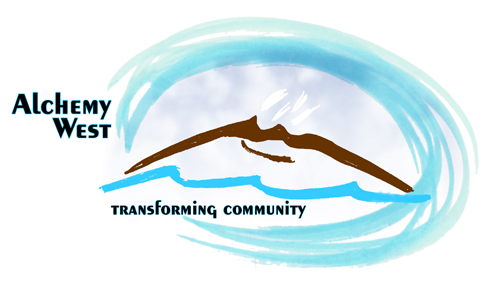
(c) 2011 Danny L. McMillin
It’s been six months since I lost my beloved Cavalier King Charles Spaniel, Murphy. The devastating fog is lifting, but the sadness lingers.
I’ve received many wonderful stories from people who’ve been touched by my family’s journey through grief as recounted in my e-book, My Dog Is Dying: The Real Life Crappy Choice Diary. Somehow they discovered something that lifted their own grief, if only briefly, that gave them hope for a future without their beloved animals.
Sometimes they doubt their wonderful stories, the signs that meant something to them, that confirmed the power of the human-animal bond in our lives, the depth of a multi-species family.
I believe in synchronicity, that signs or symbols help us resolve difficulties, or just make us laugh and enjoy being alive on our wonderful planet. I also believe that we can use synchronicity as a crutch to avoid making up our own minds about how we get through life. We have to be careful with everything we do, every tool or ability we use, including our intuition.
Meaning, if it makes us feel better or make wiser decisions, that’s great. If it gives us an excuse to pass the buck, not so great. Making informed choices is our job. As is finding comfort and meaning in the midst of devastation.
I was reminded of this today as I stumbled across an old email from someone who had been wondering if her deceased dog was okay. She wrote that later that day there was a thunderstorm, and afterwards she saw a rainbow, and a chunky white cloud formation above it in the shape of a heart. She thought it was a cliché, but felt it was a message from her dog that he was okay, that he had made it to the rainbow bridge, and she wanted to share.
I thought it was wonderful, and shared my story with her.
I was flying back east in June to be with my best friend of 40 years, to grieve privately for my lost Murphy. As the plane took off, a big white cloud formation took shape in the Seattle skies: a Cavalier King Charles Spaniel dancing in the sky, ears and tail streaming behind her. Yes, my beloved Murphy was wishing me a fun journey.
Stories matter. The truth they reveal, the comfort they bring. Nothing is a cliché if it helps heal broken hearts.
Love your multi-species family. Make each day count. Make sure your only regret is that you ran out of time, not love. Take comfort in the signs and synchronicities that arise. They got our ancestors through the long dark nights. They can help us, too.
Now, what special stories will you share with us?
© 2012 Robyn M Fritz
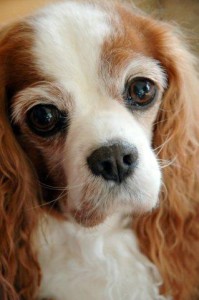 It’s hard to say goodbye to a beloved animal companion.
It’s hard to say goodbye to a beloved animal companion.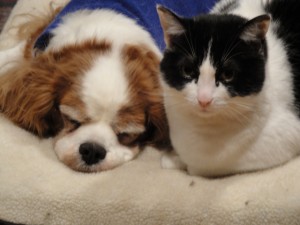
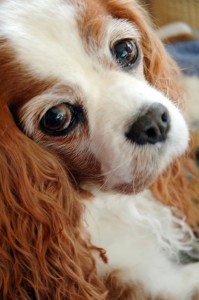 I know, wishful thinking that this is the face of the last dog who died from splenic cancer.
I know, wishful thinking that this is the face of the last dog who died from splenic cancer. 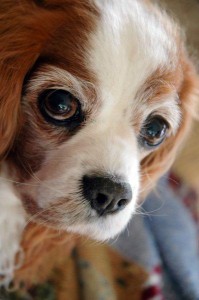 Sometimes an issue is so politicized, the cultural issues so huge, you can’t imagine making a difference.
Sometimes an issue is so politicized, the cultural issues so huge, you can’t imagine making a difference. Would I clone this dog?
Would I clone this dog?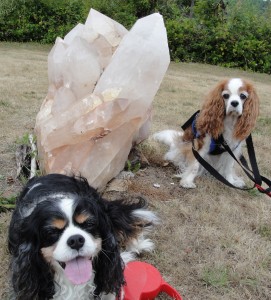 As the day progressed I realized that bald eagles were everywhere. In the few minutes I was in the back of our home their shadows swept the hillside. As I sat with Murphy and attended to my other dog, Alki, and Grace the Cat, they’d fly by, low enough for me to see their backs from our second story home. They glided by, and circled the trees at the light house across the street.
As the day progressed I realized that bald eagles were everywhere. In the few minutes I was in the back of our home their shadows swept the hillside. As I sat with Murphy and attended to my other dog, Alki, and Grace the Cat, they’d fly by, low enough for me to see their backs from our second story home. They glided by, and circled the trees at the light house across the street.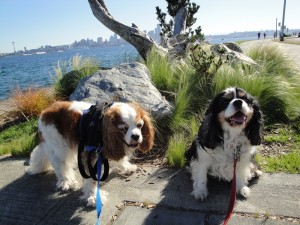 Late in the afternoon I left Murphy alone for 15 minutes to take Alki on a quick walk.
Late in the afternoon I left Murphy alone for 15 minutes to take Alki on a quick walk. 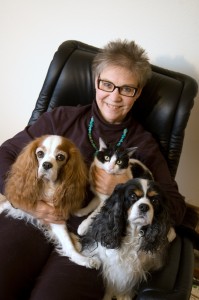 With Alki and with Grace the Cat.
With Alki and with Grace the Cat. 
